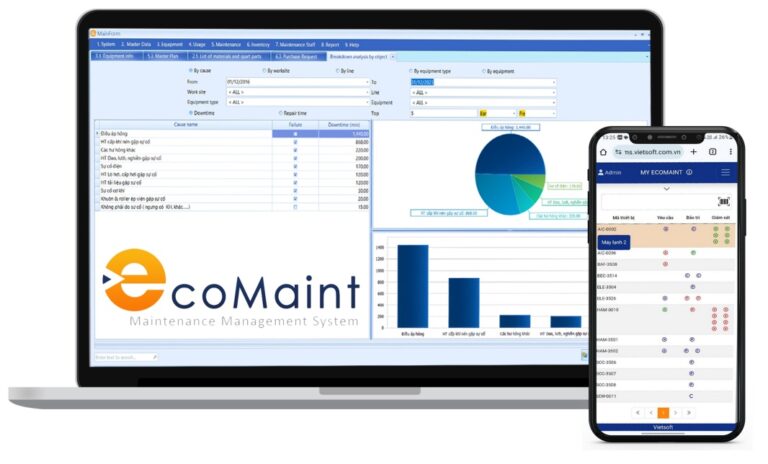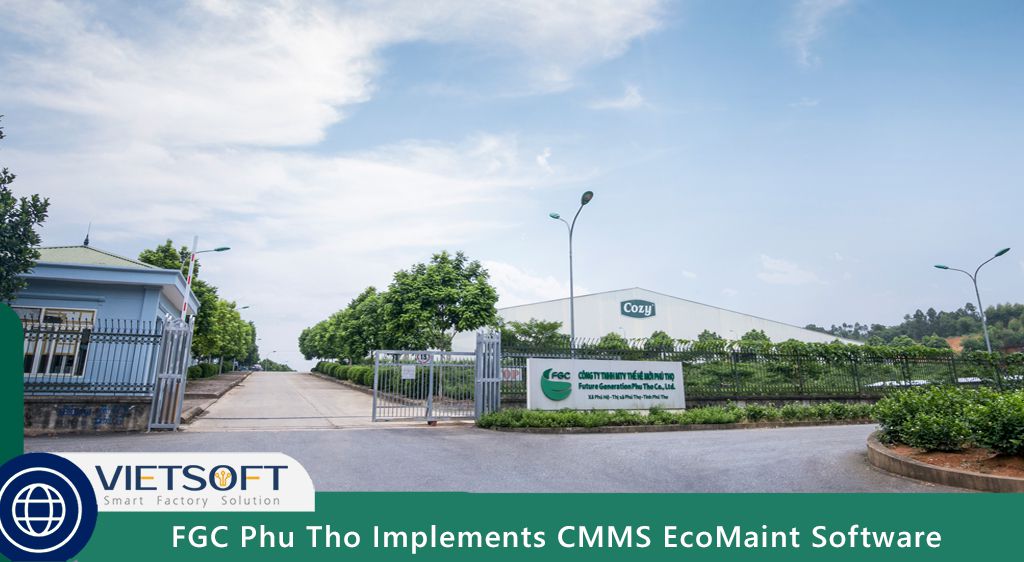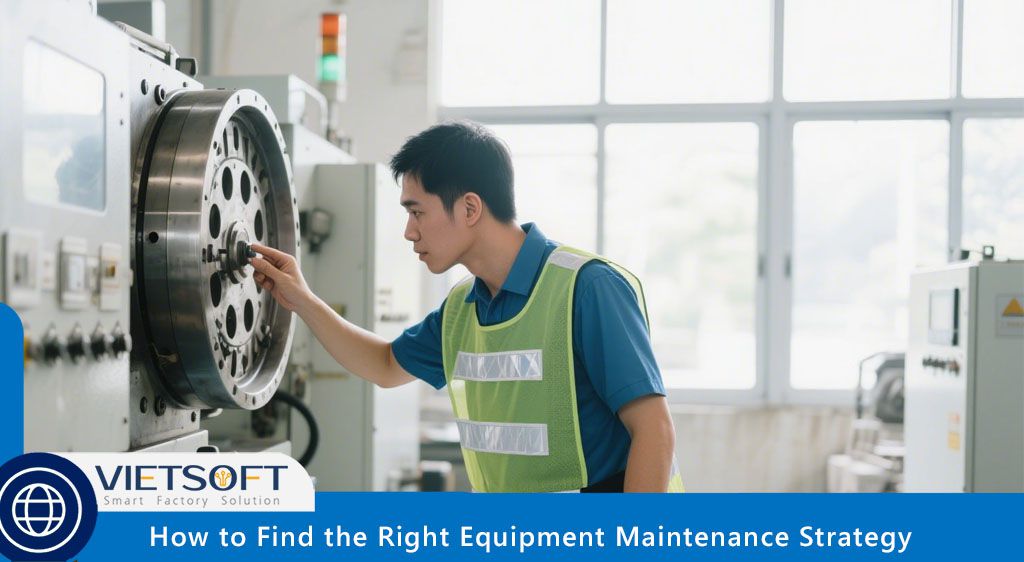
Maintenance troubleshooting is a critical skill for ensuring the smooth operation of industrial equipment and minimizing costly downtime. This guide dives deep into the essentials of maintenance troubleshooting, offering a detailed framework, practical techniques, and expert insights to help maintenance teams achieve operational excellence.
I. What Is Maintenance Troubleshooting?
Maintenance troubleshooting is a systematic process designed to identify, diagnose, and resolve equipment issues efficiently. It involves detecting anomalies, defining symptoms, isolating root causes, implementing corrective actions, and verifying outcomes. Unlike preventive maintenance, which focuses on scheduled upkeep, or root cause analysis, which investigates systemic issues post-failure, maintenance troubleshooting targets immediate problem resolution with precision and speed.
This process is essential for addressing unexpected equipment failures, such as a conveyor belt jamming or a motor overheating, where the cause isn’t immediately obvious. By following a structured approach, maintenance teams can move beyond trial-and-error fixes, ensuring long-term reliability and cost savings.
II. Why Maintenance Troubleshooting Matters
Effective maintenance troubleshooting is the backbone of operational continuity. Here’s why it’s critical:
- Cost Efficiency: Misdiagnosis leads to wasted resources, such as replacing functional parts or incurring repeat repairs. For instance, swapping out an intact pump without addressing a clogged filter doubles labor and parts costs.
- Reduced Downtime: Every minute of unscheduled downtime impacts production schedules and revenue. A robust troubleshooting process minimizes these disruptions.
- Safety and Compliance: Unresolved issues can escalate into catastrophic failures, posing safety risks and triggering regulatory fines.
- Improved Morale: Structured troubleshooting reduces frustration from guesswork, boosting technician confidence and team morale.
By adopting a disciplined approach to maintenance troubleshooting, organizations can optimize resource allocation, enhance equipment reliability, and strengthen their bottom line.
III. The Core Framework for Maintenance Troubleshooting
To achieve consistent results, maintenance troubleshooting should follow a structured, five-step framework. This approach ensures thorough diagnostics and effective resolutions, minimizing the risk of repeat failures.
1. Step 1: Detect Anomalies Early
The first step in maintenance troubleshooting is identifying anomalies before they escalate. This involves:
- Operator Feedback: Engage operators who work closely with equipment daily. Their observations about unusual noises, vibrations, or performance dips are invaluable.
- Sensor Data: Monitor real-time data from IoT sensors for metrics like temperature, pressure, or vibration. For example, a spike in motor temperature could indicate bearing wear.
- Alarm Logs: Review error codes and alarm histories in the CMMS to pinpoint when and where issues began.
Early detection sets the stage for efficient troubleshooting, preventing minor issues from becoming major breakdowns.
2. Step 2: Define Symptoms Precisely
Once an anomaly is detected, document the symptoms in detail to narrow the scope of investigation. Key actions include:
- Record Specifics: Note the location, severity, frequency, and timing of the issue. For example, “The conveyor belt jams every 30 minutes under heavy load.”
- Visual Evidence: Capture photos or videos of the fault area to provide technicians with clear context.
- Operator Insights: Document operator observations, such as recent changes in load conditions or settings.
Precise symptom definition ensures technicians focus on the right problem, reducing diagnostic time.
3. Step 3: Isolate the Root Cause
Isolating the root cause requires a methodical approach to eliminate non-relevant factors. Techniques include:
- Systematic Elimination: Use equipment schematics to test subsystems one by one, ruling out unaffected components.
- Simple Tests: Run the equipment at reduced capacity or swap components to identify the failing element.
- Root Cause Analysis (RCA): Apply the “5 Whys” technique to drill down to the underlying issue. For example:
- Why did the pump fail? Because it overheated.
- Why did it overheat? Because the cooling fan was misaligned.
- Why was the fan misaligned? Because it wasn’t inspected during the last maintenance cycle.
- Why wasn’t it inspected? Because the maintenance schedule lacked clarity.
- Why was the schedule unclear? Because the CMMS wasn’t updated with inspection tasks.
This process identifies both immediate and systemic issues, enabling targeted repairs.
4. Step 4: Implement Corrective Actions
Once the root cause is identified, apply the solution during a planned maintenance window to minimize disruption. Best practices include:
- Follow Specifications: Adhere to manufacturer guidelines for torque, alignment, and installation.
- Safety Protocols: Enforce lock-out/tag-out procedures to protect technicians.
- Coordinate with Operations: Communicate with production teams to schedule repairs without impacting output.
Using the right parts and procedures ensures repairs are effective and long-lasting.
5. Step 5: Verify and Document Outcomes
After repairs, verify the solution by testing the equipment under normal and peak conditions. Document the entire process in the CMMS, including:
- Symptoms and Tests: Record initial observations and diagnostic steps.
- Repairs Performed: Detail the parts replaced and procedures followed.
- Results: Confirm the issue is resolved and attach supporting data, such as sensor readings or photos.
Comprehensive documentation builds a knowledge base for future troubleshooting, driving continuous improvement.
IV. Key Maintenance Troubleshooting Techniques
Beyond the core framework, several diagnostic techniques enhance troubleshooting efficiency. These methods combine traditional and modern approaches to pinpoint issues quickly.
1. Visual, Audio, and Olfactory Inspections
Simple sensory checks can reveal obvious faults:
- Visual: Look for leaks, corrosion, or worn components.
- Audio: Listen for unusual clicks, hums, or rattles, which may indicate loose parts or misalignment.
- Olfactory: Detect odors like burning insulation or hydraulic fluid, signaling electrical or fluid system issues.
These low-cost techniques are often the first step in maintenance troubleshooting, guiding technicians toward more advanced diagnostics.
2. Infrared Thermography
Infrared cameras detect hot spots in electrical panels, motors, or bearings. For example, a motor running at 10°C above normal may indicate a failing bearing. Regular thermal scans prevent unexpected failures by catching issues early.
3. Vibration and Ultrasonic Analysis
Vibration sensors monitor rotating equipment like pumps or gearboxes, detecting misalignment or bearing wear through frequency analysis. Ultrasonic detectors identify leaks in pneumatic or steam systems by converting high-frequency sounds into audible signals, enabling precise repairs.
4. Oil Analysis
Regular oil sampling from gearboxes or hydraulic systems, followed by lab analysis, reveals wear metals, contaminants, or viscosity changes. Trending these results helps predict component failure, allowing proactive maintenance.
5. Photo-Based Diagnosis
Encourage operators to submit photos with work orders. Clear images of fault areas help technicians prepare with the right tools and parts, speeding up repairs. Pairing this with self-service guides for minor issues empowers operators and frees technicians for complex tasks.
VI. Leveraging Technology for Maintenance Troubleshooting
Modern technology transforms maintenance troubleshooting from an art into a science. Tools like CMMS EcoMaint, IoT dashboards, and AI analytics streamline diagnostics and improve outcomes.
1. CMMS EcoMaint: A Game-Changer for Troubleshooting
Vietsoft’s CMMS EcoMaint is a powerful tool for optimizing maintenance troubleshooting. This software centralizes asset histories, maintenance logs, and failure codes, making critical information accessible in real time. Key features include:
- Automated Work Orders: Sensor alerts trigger work orders with detailed asset histories and repair procedures.
- Mobile Access: Technicians access manuals, schematics, and task lists on mobile devices, enabling field-based troubleshooting.
- Failure Code Integration: Standardized codes simplify issue categorization and trend analysis, reducing diagnostic time.
By integrating EcoMaint into your maintenance strategy, you can reduce Mean Time to Repair (MTTR) and enhance OEE. Curious about how EcoMaint can transform your operations? Explore Vietsoft’s CMMS EcoMaint to see how it drives efficiency and reliability.
2. IoT Dashboards
Industrial Internet of Things (IIoT) dashboards aggregate real-time data from sensors, providing a unified view of equipment health. Live monitoring flags anomalies instantly, while remote diagnostics allow experts to guide repairs off-site, minimizing downtime.
3. bAI-Powered Predictive Models
Machine learning algorithms analyze historical and real-time data to predict failure risks. By ranking potential issues, these models help prioritize inspections and optimize spare parts inventory, preventing unplanned outages.
4. Augmented Reality (AR)
AR overlays repair instructions and 3D schematics onto equipment, guiding technicians through complex procedures. Integrated video calls connect field staff with remote experts, enhancing collaboration and accuracy.
VII. Building a Troubleshooting Culture
Technology alone isn’t enough; a strong troubleshooting culture is essential for sustained success. Here’s how to foster it:
1. Embedded Safety Practices
Integrate safety into every troubleshooting step:
- Daily Hazard Checks: Start team meetings with safety reviews.
- PPE Compliance: Ensure technicians follow lock-out/tag-out and PPE protocols.
- Safety Reporting: Include hazard observations in CMMS logs.
2. Cross-Skill Training
Rotate technicians across different equipment types to broaden expertise. Role-rotation drills build empathy and collective troubleshooting confidence, reducing reliance on individual specialists.
3. Clear Communication
Standardize symptom-reporting templates with fields for location, severity, and photos. Involve operators in initial data collection to capture accurate insights, reducing misdiagnosis.
4. Kaizen and Continuous Improvement
Use Kaizen boards to track recurring issues and corrective actions. Regular reviews identify trends and prioritize improvement projects, turning every troubleshooting event into a learning opportunity.
VIII. Key Performance Indicators (KPIs) for Maintenance Troubleshooting
Tracking KPIs ensures troubleshooting efforts drive measurable results. Key metrics include:
- Mean Time to Detect (MTTD): Time from anomaly detection to root cause identification. Lower MTTD indicates faster diagnostics.
- First-Time Fix Rate: Percentage of issues resolved on the first attempt, reflecting diagnostic accuracy.
- Mean Time to Repair (MTTR): Average repair duration, measuring resource efficiency.
- Mean Time Between Failures (MTBF): Average uptime between breakdowns, indicating asset reliability.
- Overall Equipment Effectiveness (OEE): Combines availability, performance, and quality to quantify downtime’s production impact.
By monitoring these KPIs in CMMS EcoMaint, teams can identify gaps and refine processes for continuous improvement.
IX. Benefits of Effective Maintenance Troubleshooting
A structured troubleshooting approach delivers significant benefits:
- Reduced Downtime: Faster diagnostics minimize production losses.
- Cost Savings: Accurate repairs eliminate wasteful part swaps and repeat fixes.
- Enhanced Safety: Early issue detection prevents hazardous failures.
- Improved Reliability: Proactive troubleshooting extends asset lifespan.
- Data-Driven Decisions: Comprehensive logs support strategic maintenance planning.
These benefits translate into a stronger competitive position and higher profitability.
IX. Integrating CMMS EcoMaint for Optimal Results
To maximize the impact of maintenance troubleshooting, integrating a robust CMMS like EcoMaint is essential. Developed by Vietsoft, EcoMaint streamlines every stage of the troubleshooting process, from anomaly detection to outcome verification. Its mobile-friendly interface, real-time data integration, and failure code system empower technicians to resolve issues quickly and accurately. By centralizing asset data and automating workflows, EcoMaint reduces MTTR and enhances OEE, making it an indispensable tool for modern maintenance teams.
Ready to elevate your maintenance strategy? Learn more about CMMS EcoMaint here.
Contact us for consultation via hotline: 0986778578 or email: sales@vietsoft.com.vn
X. Conclusion
Mastering maintenance troubleshooting is about combining a structured framework, advanced diagnostic techniques, and modern technology like CMMS EcoMaint. By detecting anomalies early, defining symptoms clearly, isolating root causes, applying precise repairs, and verifying outcomes, maintenance teams can transform reactive firefighting into proactive problem-solving. This approach reduces downtime, lowers costs, and enhances safety, ensuring industrial operations run smoothly and efficiently.
Take the next step: audit your current troubleshooting processes against this five-step framework. Identify gaps in detection, documentation, or verification, and leverage tools like EcoMaint to bridge them. With the right mindset, techniques, and technology, your team can achieve troubleshooting excellence and drive continuous improvement across your organization.




